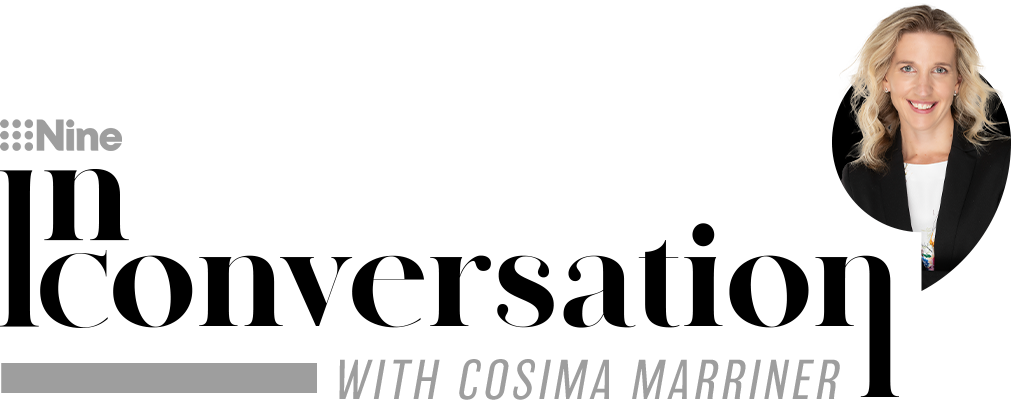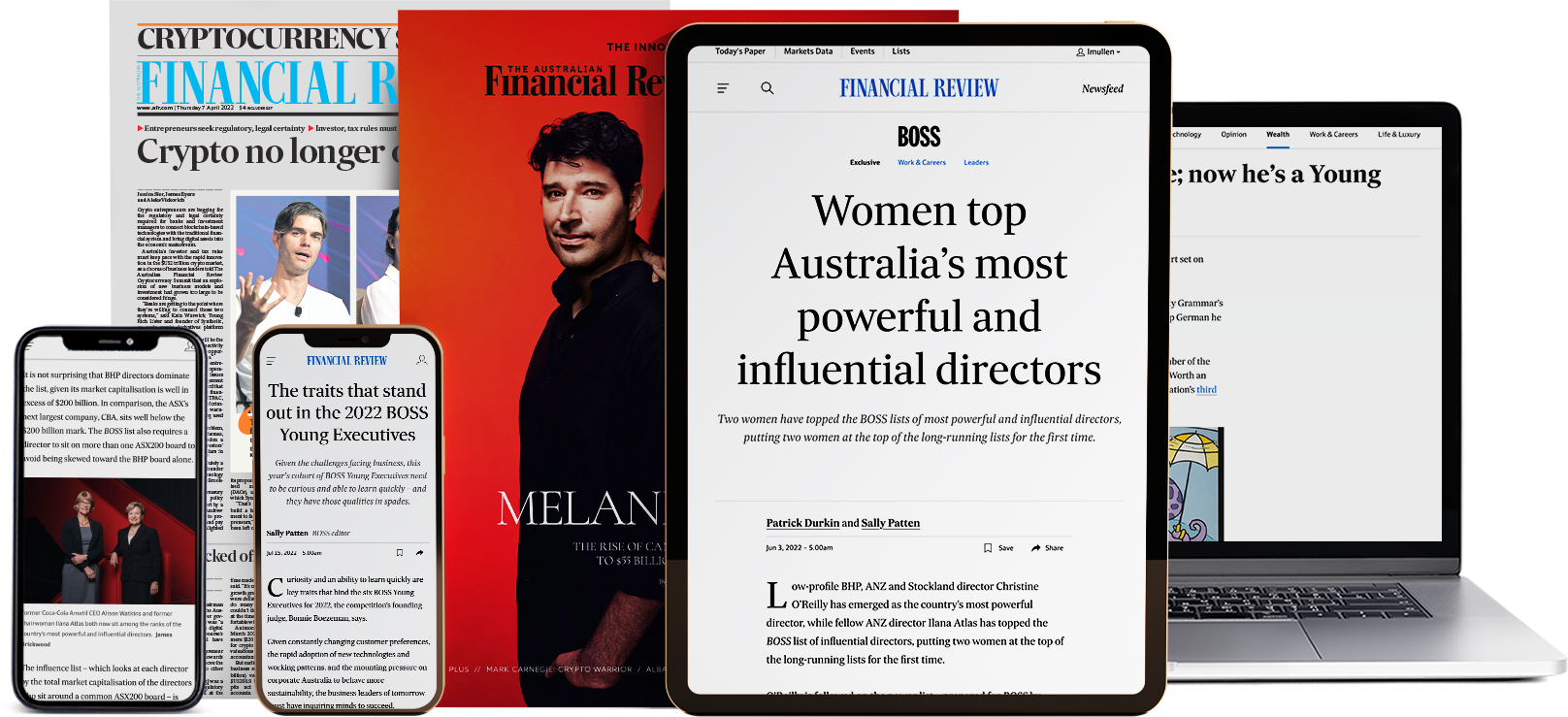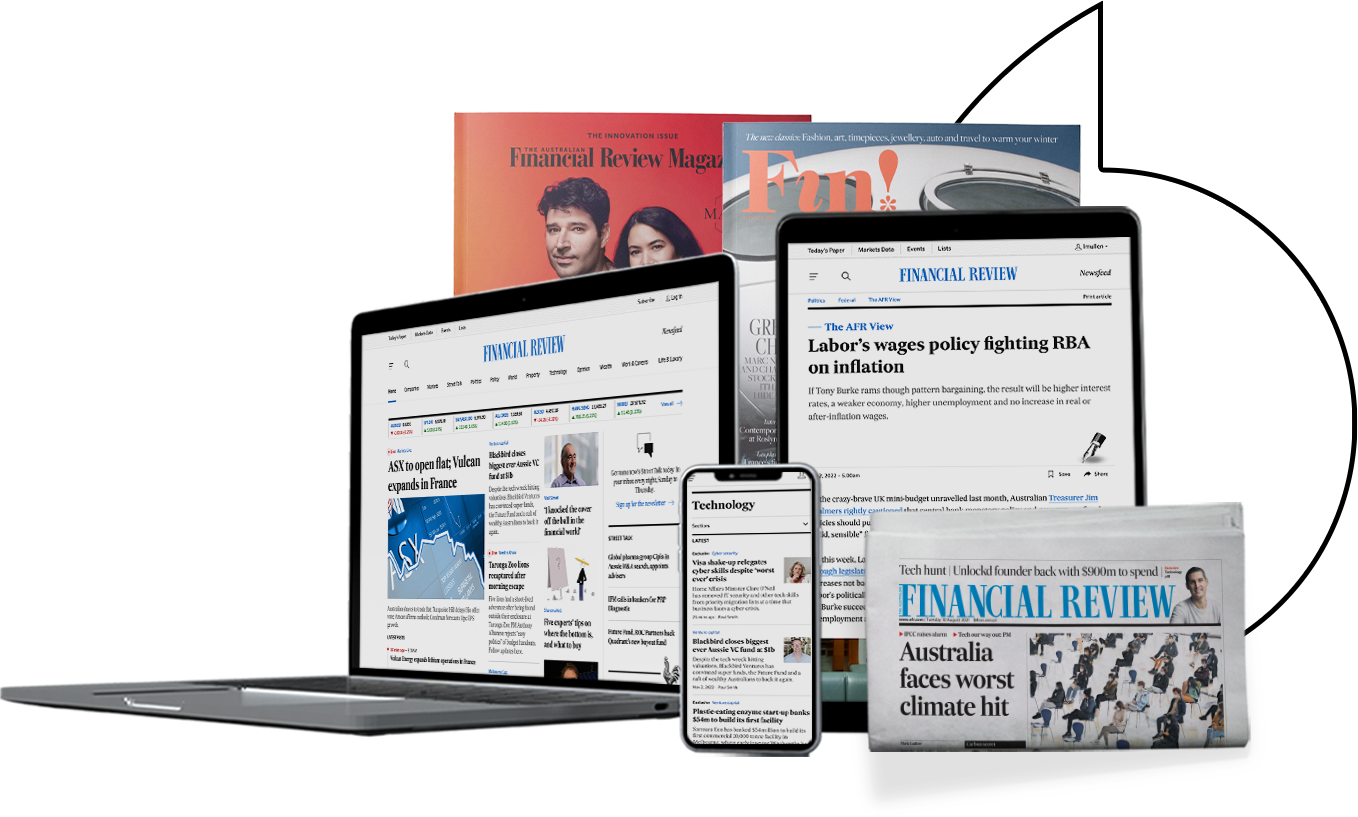

Cosima Marriner started her career as a journalist at the epicentre of one of the great fevered moments in our history.
Working as a freshly graduated journalist on what was then Kerry Packer’s Australian Personal Computer magazine in 1999, Marriner found herself reporting on the frenzy of the dotcom boom as well as the near-certain doom of the Y2K bug. It was a crazy world of stupendous valuations for worthless businesses and prophecies of doom that never came to pass. It was also a foreshadowing of where her career would lead.
Like most journalists who graduated from those heady IT publishing days Marriner has certainly gone on to bigger and better things. In a recent interview with B&T's Editor-in-Chief David Hovenden, Cosima talks about jumping from the magazine world in Sydney’s Park St, and buckling up for a 20-year stint at the then Fairfax’s Sydney Morning Herald before recently being appointed managing editor of the Australian Financial Review.
// Do you think that readership has changed a great deal?
It’s definitely changing. The audience is getting younger, and it is different to the previous Financial Review audience, which was very corporate and career-path orientated.
We still have a chunk of those in professional services, legal and the like. But we also have these new investor types that are dabbling in crypto or whatever. They just want to grow their wealth independently. They’re entrepreneurially minded people with a slightly different mindset to our traditional audience.
The other thing that’s very interesting is the growth in our female audience, which I am particularly focused on.
More and more women are taking key leadership roles in business and politics. You saw the success of the Teal movement at the election. The Federal Labor cabinet has 10 women in it, Woodside, Telstra, Optus – they’re all big companies that are run by female CEOs now.
A lot more women are investing in the stock market. There is a huge market there that we need to capture and represent and appeal to.
// There hasn’t been a single woman appointed to an ASX 200 board for two years. So, there’s a lot of work to be done on the equality front.
I think the Financial Review has a key role to play in accelerating that change. Showcasing female achievements, female views. Proving that it’s not just all men in suits. I think it sort of becomes a bit of a virtuous cycle.

// You’ve got a new inserted magazine, Fin!, as well. Tell me about that.
All credit goes to Matt Drummond the editor of AFR Magazine who came up with the concept of a new lifestyle magazine and managed to get a chunk of advertisers on board, which has underwritten it. It’s a great magazine doing fantastically well.
// What’s the proposition between that and the historic AFR magazine?
It’s much more lifestyle oriented – fashion, design, travel, style. And our digital audience data tells us that our subscribers really want that lifestyle content. It’s very well read and it improves subscriber retention. When we look at all our audience data we see that lifestyle content is one of the key drivers of conversion to subscription.
Readers that are into the lifestyle content are less likely to churn, which is very important. So we need to create more of this content. During the pandemic we shut a lot of our bespoke magazines and concentrated on the core ones. Fin! is the first new magazine product post-pandemic that we've done.
// What’s next in the pipeline? You must have a long list of KPIs in your new role.
Yes, the thing that attracted me to this role was the focus on subscriber growth and business development.
The good thing about the Financial Review is that it has done so well during the pandemic, but there are still so many growth opportunities available to us. If you want authority and trust you can’t beat the Financial Review. It’s just a question of prioritising what we should do first, and then what we should do next.
We want to give people bigger opportunities, more 360 opportunities to engage with the Financial Review, with more events, more lists, more podcasts, and more innovations like the NFT cover we did for the Power List in 2021.
Without giving too much commercially sensitive information away, we're going to expand our very successful events business. You’re going to see more summits this year. We’re going to be focusing on mining, workforce, investment and cybersecurity.
We’re also going to expand our successful lists business. And as part of that, which dovetails with the sharper focus on women, we’re going to extend our Rich Women list franchise, expanding the number of women that are included on that list. And we’re also going to create some additional content around that. The other focus for us is the B2B market. A lot of our growth during the pandemic came from the B2C segment, so we’ve now got a huge opportunity to drive B2B subscriptions. They’re natural Financial Review subscribers and they’re much less likely to churn. So we’re doubling down on targeting particular segments within that B2B audience.
We are also expanding our podcasts. We have recently launched two new podcasts – Chanticleer, featuring Australia’s most influential business columnists, Tony Boyd and James Thomson in conversation, and The Fin, a weekly news podcast hosted by Lisa Murray. Next year there will be new seasons of Julie-anne Sprague’s How I Made It, our very successful podcast from within the Rich List brand. And then we’ve got our Tech Zero podcast, which is all about how companies are adapting to reach net zero. That reaches a very powerful audience and has also been very successful from an advertising point of view.
Explore The Australian Financial Review here.
Find out how your brand can leverage the power of Nine's Publishing assets to drive business outcomes. Request more information.



